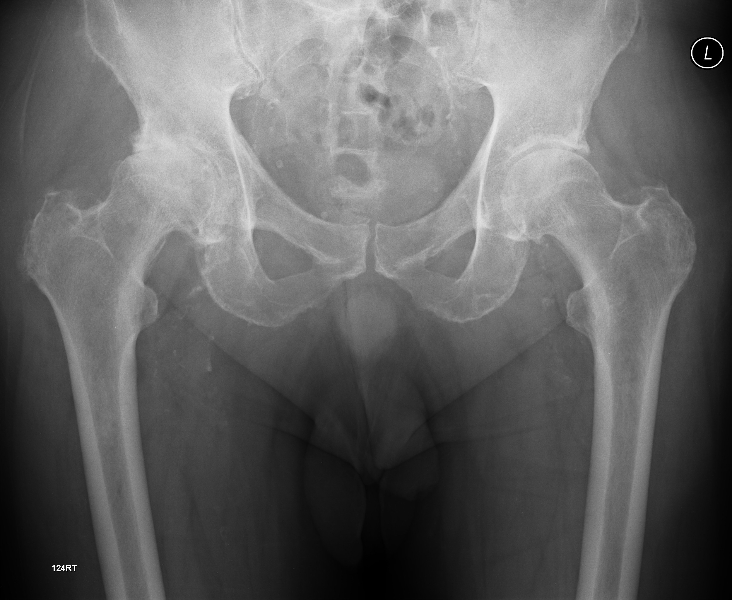Total Hip Replacement
What is replaced?
The head of the femur (thigh bone) is removed and the acetabulum (socket in the pelvis) is reamed out to remove the arthritis. These can be replaced with a number of options but all the ones I perform have a stem within the femur and a new socket in the acetabulum. These can be cemented (glued in), uncemeted (held in by in growth of bone) or a mixture of both (hybrid hip). The materials I use are metal, ceramic and plastic (highly cross linked polyethylene) – but I never use metal against metal. The benefits of can be discussed with your surgeon.
Here are some examples:
This patient is now pain free and happy with his joint replacement
The uncemeted hip replacement stem and cup are made from titanium which is coated in a substance called hydroxapetite. This is a substance that looks a lot like a coral reef under a microscope and allows the bone to grow into it to give a solid fix and hold. The head and socket liner are made of ceramic which is the second hardest available substance we have access to after diamond! It is therefore very hard wearing and should last a long time hence its use in younger patients.
When are you ready for hip replacement?
Hip replacement is a great operation for removing pain. As a result of this, patients feel better, sleep better, avoid painkillers and become more mobile. You have to remember however that it is a replacement so it is NOT a normal hip joint again. The right person to make the decision on when a patient is ready for a hip replacement is not the doctor or patient’s family, it is the patient themselves.
As with everything in life, one must balance the risks with the benefits and make a decision based on the advice given by the GP and Surgeon. In summary, you are probably ready to discuss hip replacement when:
- Painkillers don’t help.
- You can’t sleep at night.
- You can’t cut your toenails.
- You have a reduced quality of life.
- You are at risk of losing your independence.
What are the risks with surgery?
On average over 90% of people who undergo total hip replacement are happy with the results, there are however risks as with any operation. They include the following:
- Infection – 0.5%
- Dislocation
- Leg length discrepancy
- Nerve or vessel damage
- Bleeding
- Clots – in the legs, heart, lungs and brain
- Wear and tear and the need for redo surgery in the future.
All of these risks can be discussed with your surgeon and explained in more detail. For revision surgery, the risks are higher still.




